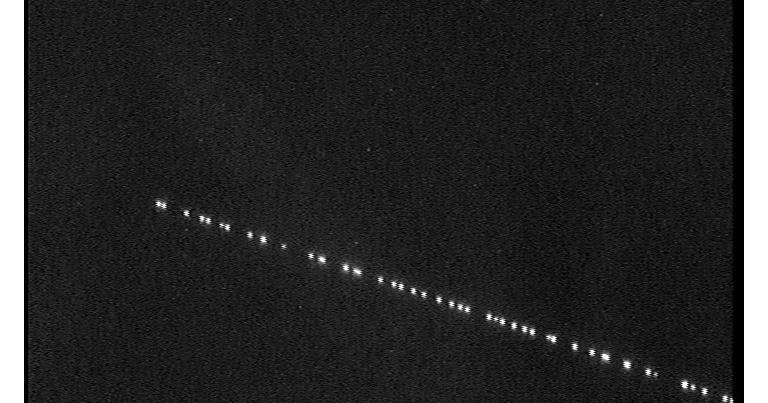
SpaceX launched 60 Starlink satellites, making it the world’s largest commercial satellite operator.
The 60 Starlinks were launched on January 6 (local time) from Cape Canaveral Air Force Base in Florida, USA, and were put into the air at an altitude of 180 km. It succeeded in the 3rd launch following last May and November. The purpose of Starlink is to provide commercial broadband Internet around the world. After confirming normal operation, the satellite moves into orbit at an altitude of 550 km with the mounted ion rocket. At this stage, the satellites are dense and can be checked from the ground.
Until now, Starlink has launched 182 units, including prototypes, but 172 units are actually in operation. The 10 satellites may not have reached their final operational orbit, but SpaceX is not accurately revealing.
Anyway, with this launch, SpaceX becomes the world’s largest commercial satellite operator, exceeding 150 Earth observation satellites from Planet Labs. The company, of course, is planning to build 42,000 satellites in the end. By the end of 2020, it is expected to pour 1,440 units at a rate of twice a month.
However, astronomy circles are contemplating the influence of Starlink’s astronomical observations. SpaceX explains that this effect is temporary and that once the satellite reaches its target orbit, it will be virtually invisible from the ground. In this launch, an experimental dark coating was applied to a satellite to suppress reflectance.
There are also concerns about the outbreak of space debris. Starlink satellites are designed to fall into the atmosphere after 25 years, but competitors such as OneWeb, Telsat and Amazon are trying to build large-scale satellite internet. Due to this, the Earth’s low orbit will become more and more crowded. Satellites need a variety of discussions, such as space infrastructure maintenance, safety, and impact on scientific research. It seems that space X and other private companies, space agencies, and scientists will need to establish clear rules or regulations. Related information can be found here.


















Add comment